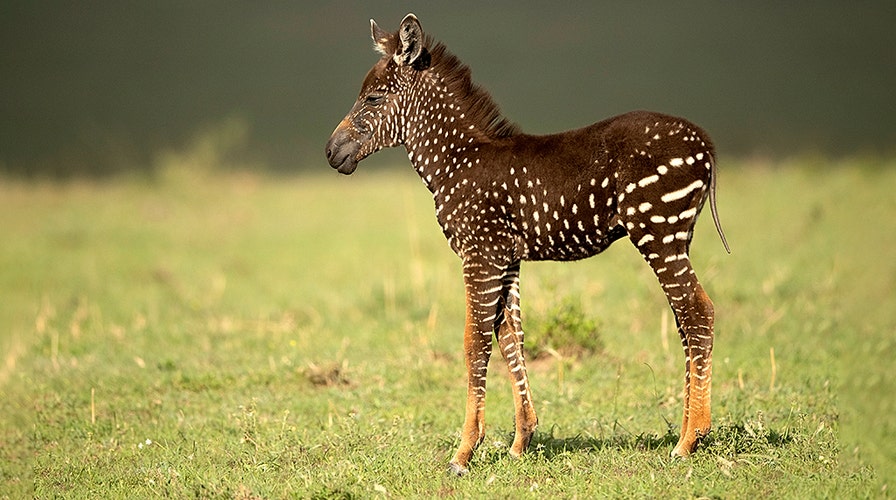A zebra foal discovered in Kenya with a polka-dotted pattern instead of the distinctive black and white stripes that typically adorn the coat of the African species has a rare genetic mutation.
Wildlife photographer Frank Liu shared photos and video of the striking plains zebra discovered in the savannah of the Maasai Mara, a national reserve in southwestern Kenya near the Tanzanian border.
INCREDIBLE PHOTOGRAPHS SHOW RARE 'BLOND' ZEBRA THRIVING IN THE WILD
“At first glance, he looked like a different species altogether,” Liu told National Geographic of the week-old zebra.
But the zebra, who Liu’s Maasai guide named Tira, owes its eye-catching coloration to a rare genetic mutation called pseudomelanism, a condition that changes the stripe pattern of animals, biologist Ren Larison told the outlet.
WHY DO ZEBRAS HAVE STRIPES? PERHAPS TO DAZZLE AWAY FLIES
Tira isn’t the first zebra to exhibit an odd color variation, like partial albinism exhibited in a rare blonde zebra photographed earlier this year in Tanzania's Serengeti National Park.

Tira's dark, polka-dotted coat may make it more difficult to ward off biting flies. (Rahul Sachdev/Caters News)
Similar foals have been spotted in Botswana’s Okavango Delta, according to Africa Geographic. But Tira is the first to be seen in the Maasai Mara and may the first-ever recorded zebra to have traded in its stripes for polka-dots, according to Liu.
Tira’s odd coat may make its life in the savannah’s wilderness more difficult because predators can easily spot animals with atypical color variations from among the pack, Larison told National Geographic.
Africa’s biting flies may pose another obstacle for Tira.
CLICK HERE TO GET THE FOX NEWS APP
Wildlife experts have said that zebras developed their distinct black and white stripes specifically to deter the insects, who don’t like landing on striped surfaces, and not for the purpose of camouflage.

